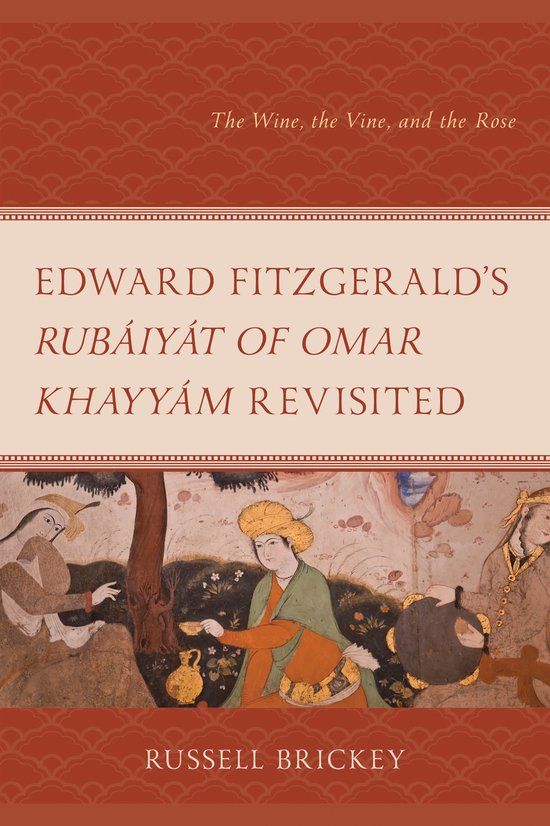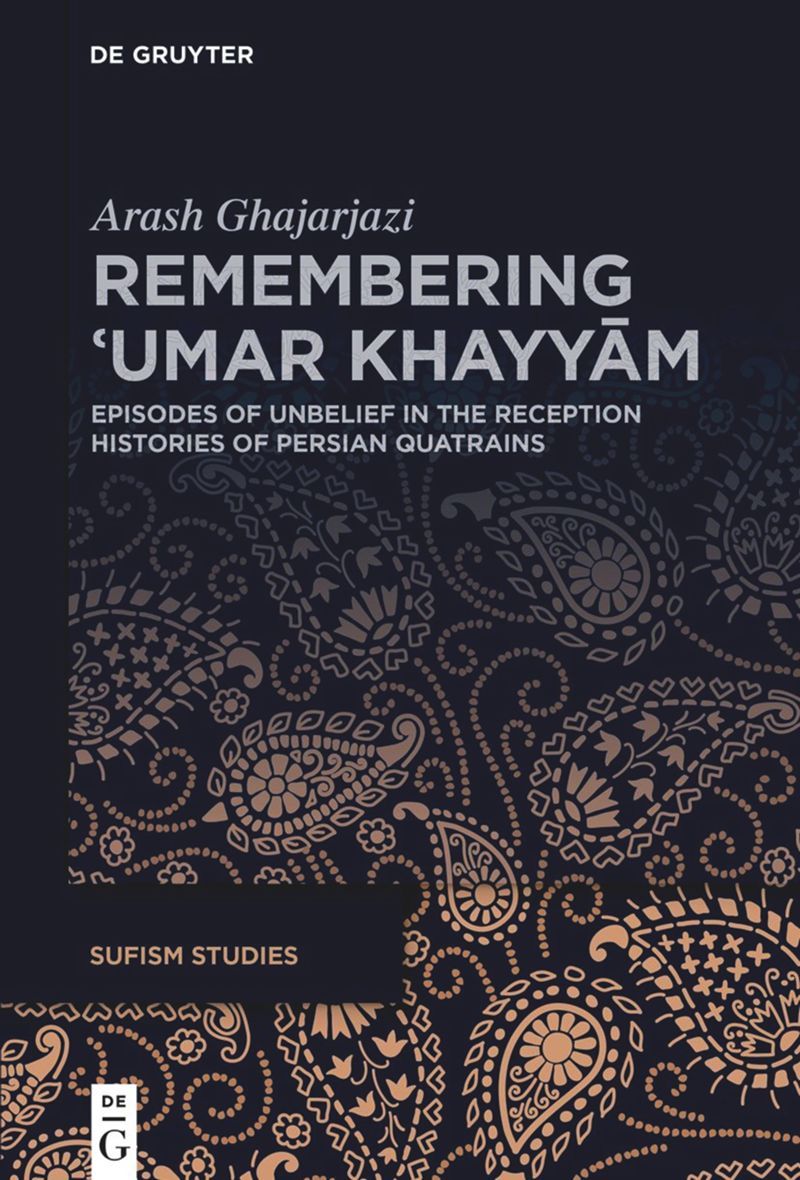The Rubaiyat of Omar Presto. Harlequin
In: The Singapore Free Press, 14 February 1951, Page 4
Archives
Rubáiyát
Rubáiyát
In: Morning Post – Friday 05 October 1900
The Teacher’s Rubaiyat
The Teacher’s Rubaiyat
In: Daily News (London) – Friday 10 February 1922
3 quatrains
Robert Graves’s Mythopoetic Hospitality
Robert Graves’s Mythopoetic Hospitality. Sara Greaves
In: HAL Open Science, 2023
This article draws on poetry criticism, translation studies and, briefly, hospitality studies to revisit the controversial translation of The Rubaiyyat of Omar Khayyam by Robert Graves and Omar Ali-Shah. Graves took an interest in Sufism, especially as a ‘force of mental power which could be created by telepathic communication’ and worked together with the Shah brothers to dislodge Fitzgerald’s nineteenth-century best-selling version and replace it with what was intended to be a founding text of twentieth-century Western Sufism, a ‘secondary original’. Nevertheless, the poet polymath had his own agenda, an act of mythopoetic hospitality that the controversy should not be allowed to overshadow.
Rubaiyat of Omar Khayyam in the interpretation of the Russian scientist Z.N. Vorozheykina
Rubaiyat of Omar Khayyam in the interpretation of the Russian scientist Z.N. Vorozheykina. Sultanova Zulkhumor Sabatullaevna
In: ANGLISTICUM. Journal of the Association-Institute for English Language and American Studies, Vol. 12 (2023), 11 (November), p. 27-33
In this article, Z.N.Vorozheykina, first of all, paid attention to the socio-ethical events that were the focus of the poet’s attention, and in this context, analyzed the meaning and ideological essence of the poet’s rubai, and in the article “Umar Khayyom and Khayyom’s rubai” first Khayyom indicates the sources that informed him as a poet. In particular, he mentions the testimonies of “Khayyam’s younger contemporary, historian Abulhasan Bayhaqi”, Arabic-speaking historian Kifti, Arabic-speaking jurist Najmuddin Razi about “Khayyam’s Arabic poems and his Persian rubai”. This scientist singles out Khayyam’s poetry in the rubai genre and considers “the main content of his poems to be philosophical and joyous lyrics.” In this context, analyzing Khayyam’s Rubaiyat based on a mental approach, he comes to the conclusion that it is a “great idea”. Taking into account the personality of the poet Khayyam, that is, the confirmation of the right of every person living on earth to live happily, allows us to consider Khayyam the greatest humanist of the past,” he says (45, 13). From this point of view, the researcher analyzes samples from Khayyam’s Rubaiyat. and shows its essence and main approaches of thought. Segregation of Khayyam’s work into the world of topics, identification of ideological directions, recognition and evaluation of Khayyam’s work, the merits of this orientalist are very great. Omar Khayyam’s biography occupies a special place in Russian oriental studies. In the scientific works devoted to the study of this topic, issues such as his birthplace, social status, date and place of birth, personal and family life, and his relationship with his contemporaries were evaluated from different angles.
Edward FitzGerald’s Rubáiyát of Omar Khayyám Revisited
Edward FitzGerald’s Rubáiyát of Omar Khayyám Revisited The Wine, the Vine, and the Rose. Russell Brickey. Lanham, Lexington Books, 2025. 236 p. ISBN: 9781666960013
Also available as eBook.
Edward FitzGerald’s Rubáiyát of Omar Khayyám Revisited: The Wine, the Vine, and the Rose examines an overlooked masterpiece which was a phenomenon in its day. Rubáiyát of Omar Khayyám, translated by Edward FitzGerald (1809-1883), sold millions of copies between its first publication in 1859 and World War II, becoming one of the best-selling books of all time, only to disappear from the public eye until the age of the Internet revived interest in the work. Russell Brickey synthesizes scholarship and close reading in the first monograph dedicated to the Rubáiyát, taking into account the original poetry of Omar Khayyám (1038-1141), a polyglot who lived in medieval Persia, and the western poetic tradition that informed FitzGerald’s creative palimpsest. These include the Song of Solomon, 17th century Cavalier Poetry, the Sonnet Sequence, and the poems of Alfred Tennyson, William Wordsworth, and others. This book looks at the offshoots of Omar Khayyám and Edward FitzGerald’s poetic brotherhood, the pulp-novels, movies, and poems their poem inspired.
Remembering ‘Umar Khayyám
Remembering ‘Umar Khayyám. Episodes of Unbelief in the Reception Histories of Persian Quatrains. Arash Ghajarjazi. Berlin, De Gruyter, 2025. 340 p., 18 illus. ISBN: 9783111617077. (Sufism studies; 3)
This book explores the Persian sage ʿUmar Khayyām and the globally renowned quatrains (rubāʿiyyāt) attributed to him from a new angle. These quatrains have unleashed responses from Sufis and Islamic theologians, fostering secular thought in the Persianate world. From the early 12th century to the present, ʿUmar Khayyām’s persona has been a source of inspiration for various literate communities. This monograph addresses an undesirable gap in Khayyām scholarship by re-examining the reception of his quatrains within a changing collective memory. It investigates a wide range of texts and objects, including Sufi texts, chronicles, mystical poetry anthologies, memorial monuments, Victorian illustrations, and modern periodicals. The focus is on how the remembrance of Khayyām has contributed to the formation of a secular intellectual tradition in modern Iran. The book argues for a re-conceptualisation of Khayyām as a nexus of Sufi literature, memory, and secularity. Additionally, it critically examines traditional scholarship on Khayyām’s biography and the debates regarding the authenticity of his quatrains. This work aims to connect scholars of Sufism Studies, memory studies, and Persian and Islamic Studies.

